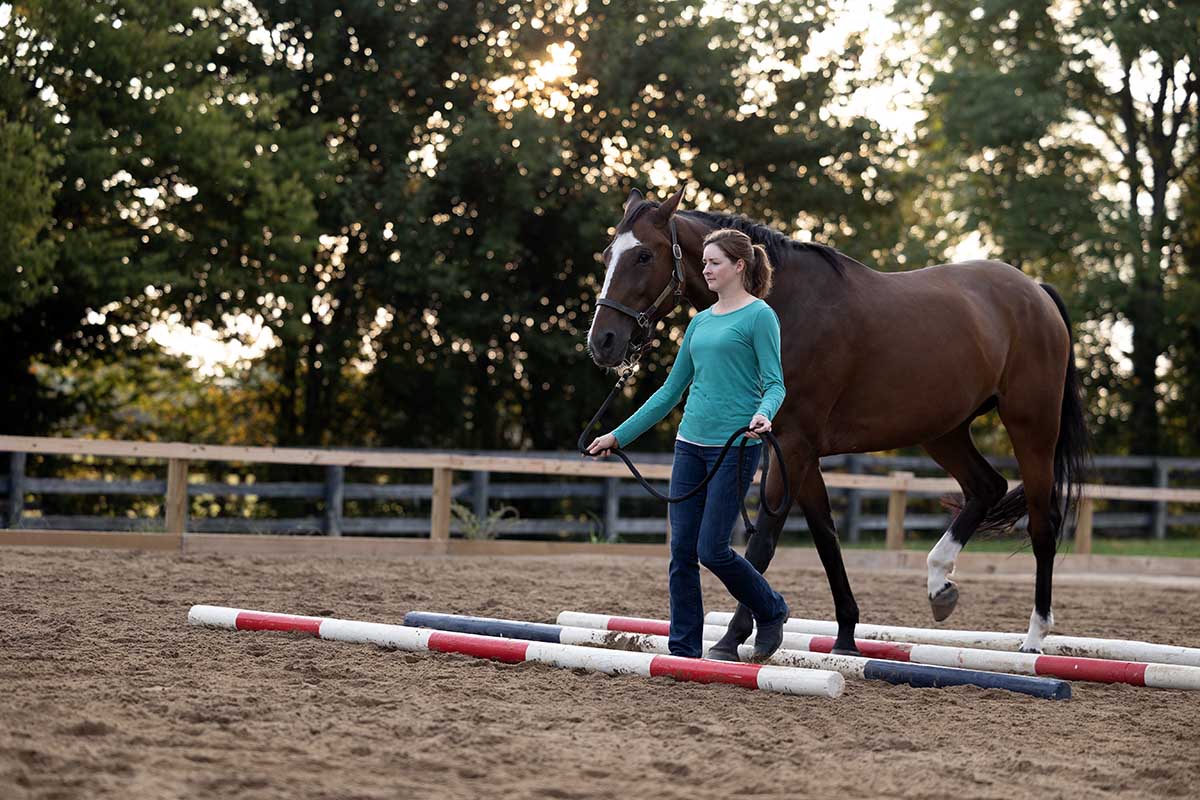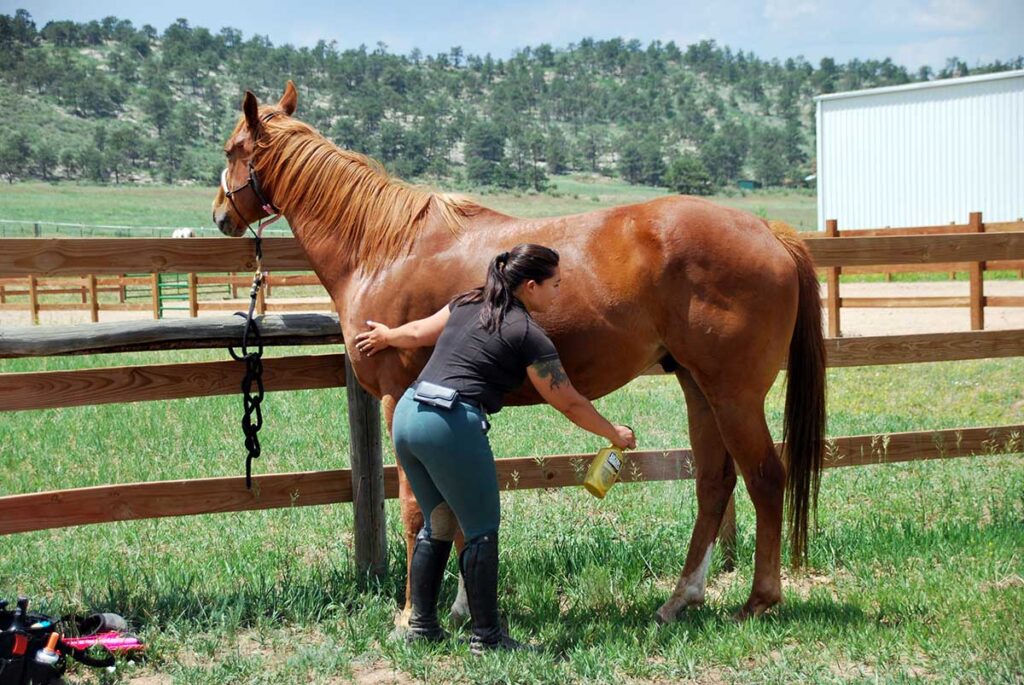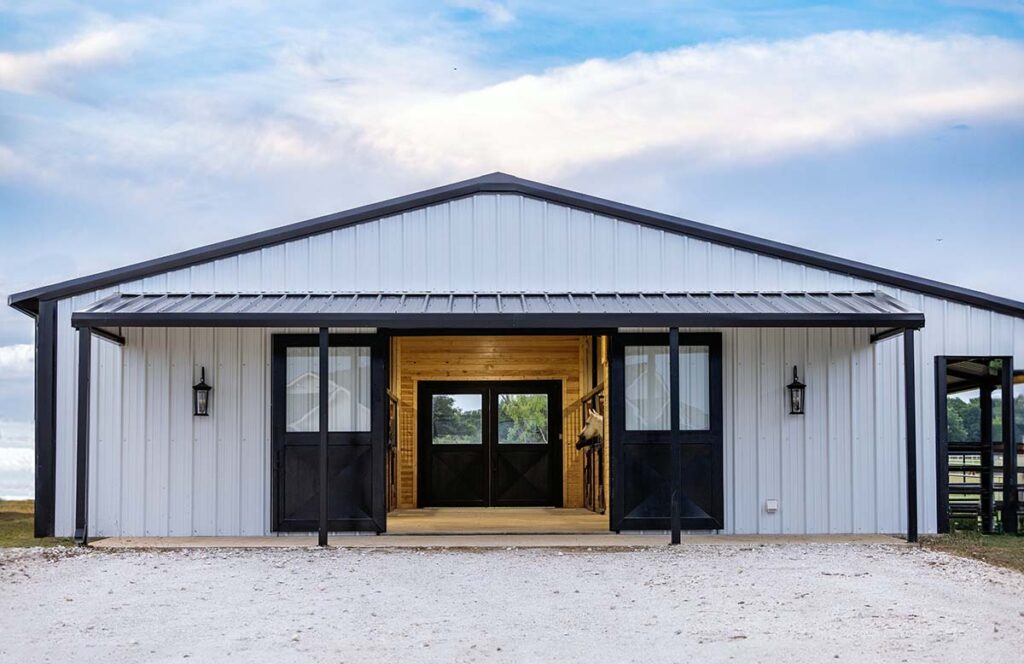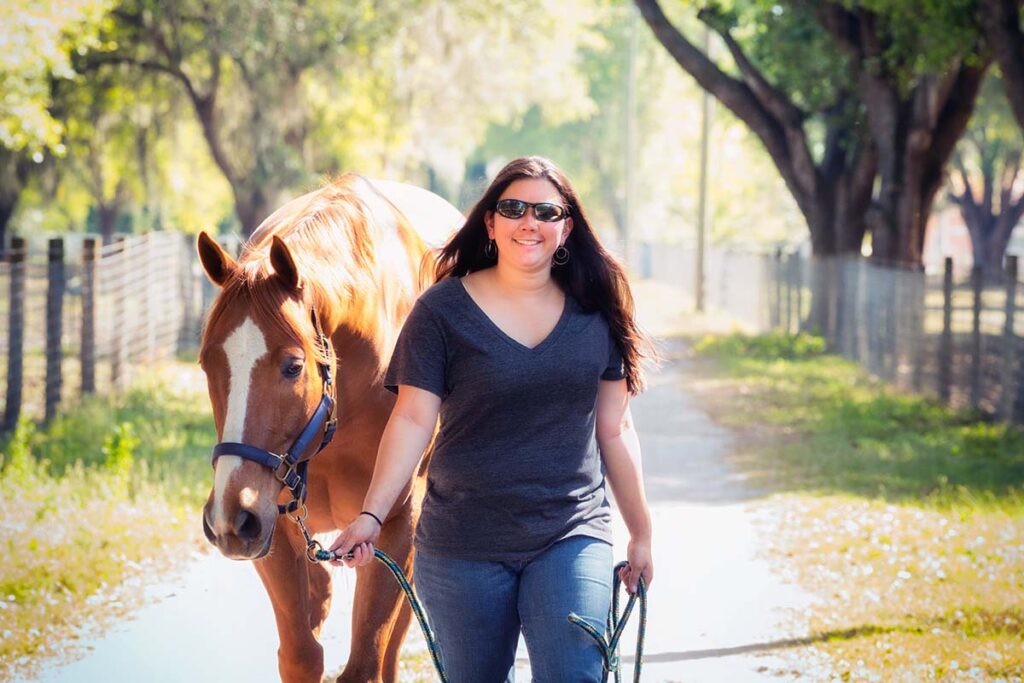Not all equine training and exercises involve climbing in the saddle. After all, what do you do if you’re faced with frozen ground or relentless rain and don’t have access to an indoor arena? Or perhaps you just want to improve your bond and communication with your equine partner. There might also come a time when your horse gets injured and can’t be ridden until he heals. No matter what brought you here, there’s no wrong time or reason to practice groundwork exercises. So let’s get started!
What You’ll Need
First of all, you don’t need expensive tack or equipment to perform these useful exercises. The only must-have for groundwork is a safe halter and lead rope. A stick or longe whip might also come in handy to give your horse direction. Ideally, you and your horse will have a safe enclosure like a round pen, paddock, or arena to work in. Some exercises warrant ground poles and cavalettis; if you don’t have access to these, you can get creative with straw bales, shavings bags, old tires, and tree logs, always keeping safety in mind.
Setting Goals
Having a plan for your groundwork sessions will help you stay motivated and focused. It will also help you assess your horse’s progress. First, think about your goals.
- If you’re hoping to hit the trail with your equine partner, you’ll want to trust that he’s surefooted and confident over different terrain. Prioritize exercises that require him to pay attention to where he places his feet, such as leading him up and down hills, walking through various surfaces, and stepping over small obstacles. The more random, the better.
- If your goal is to build flexibility, strength, and muscle to gear back up to ridden work, you’re in luck. Research shows that simple groundwork exercises like backing up, turning in small circles, and walking over raised poles strengthen the muscles that stabilize your horse’s core and pelvis and improve the quality of his stride, if done three days a week for three months. As with any exercise routine, consistency is key.
- Finally, if you’re drawn to groundwork because you want a better relationship with your horse, the opportunities are endless. Using voice commands and body language, you can teach your horse to move, halt, wait, back up, pick up a leg, and much more, all while instilling patience and respect for your personal space.
Groundwork Exercises in Practice
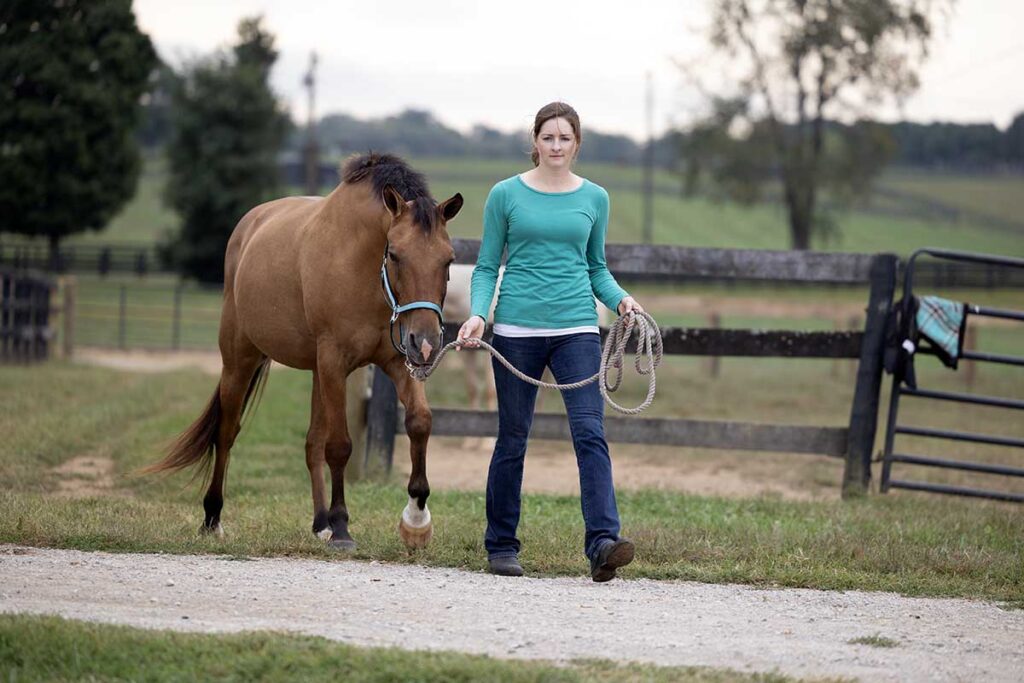
Remember to introduce groundwork exercises gradually and to reward your horse’s baby steps. Let’s take, for example, teaching your horse how to back up from the ground, an easy exercise to get you started. You’ll want to say your chosen verbal cue (i.e., “back”) while applying gentle pressure on the noseband of his halter and on his chest (with your hand or the stick) until he shifts his weight back ever so slightly. When that happens, immediately remove all pressure, and praise him. This can be a verbal praise (“good boy!”), a scratch on his favorite spot, and/or a treat.
Then, raise the bar, and ask him to take half a step back before removing the pressure and rewarding him. Then, a full step. Then, two full steps. Eventually, you’ll want your horse to back up based on your body language and the verbal cue (“back”) alone, without applying physical pressure. Repeat the process for any new exercise. Ideas include:
- Walking over ground poles.
- Weaving through cones.
- Standing quietly at the mounting block.
- Walking through water.
- Lowering the head.
- Yielding the hindquarters.
- Trailer loading.
- Walking over a tarp.
- Longeing at the walk, trot, or canter.
- Placing one or both front feet on a tire or pedestal.
- Leading exercises, where your horse should stay at your shoulder, moving and stopping when you do.
Take-Home Message
Groundwork can be an excellent way to keep your horse’s mind engaged, establish good communication and ground manners, and improve his fitness, balance, and dexterity year-round. You can have fun and get creative with your exercises. Many equestrians have successfully used groundwork to teach their horses how to bow, lay down, and more.
Related Reading: The Beginner’s Guide to Longeing a Horse
Lucile Vigouroux, MSc, holds a master’s degree in Equine Performance, Health, and Welfare from Nottingham Trent University (UK) and an equine veterinary assistant certification from AAEVT. She is a New-York-based freelance author with a passion for equine health and veterinary care. A Magnawave-certified practitioner, Lucile also runs a small equine PEMF therapy business.
Are you enjoying this content? Sign up for My New Horse’s FREE newsletter to get the latest horse owner info and fun facts delivered straight to your inbox!

